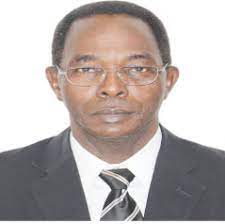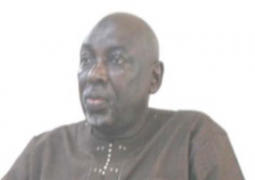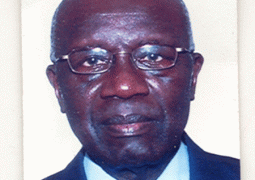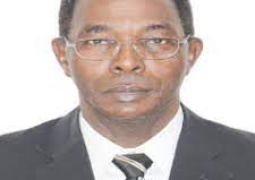
The "bread and butter" issue is central to sustainable livelihoods. COVID-19 and the Russia-Ukraine war have led to harsh realities biting the global population, and The Gambia is no exception. A national dialogue on the food crisis and the difficult economic circumstances could be key in finding solutions. As a nation, we have the capacity to cushion the effects of the crisis if only the right people are engaged. It is the government's responsibility to address the market's challenges. Silence on such a national issue is not an option, given its political implications. It will soon become a topic of national discourse. The good news is that every calamity brings opportunity. The country has seen tremendous development spearheaded by the Barrow government. The unprecedented rate of infrastructural development and institutional projects taking place cannot be ignored. Gambians are the beneficiaries, regardless of political affiliations and tribal attributes. Let us consider some of these achievements. Seeing is believing, and acknowledging—whether silently or openly—is a must. Upper River Region (URR) Complete road, bridge, and electricity infrastructure projects have been constructed. Basse now has a college, a new market, and a major health center. Plans for water supply projects and increased rice production schemes are in moHon. It is politically challenging to dismiss Barrow's legacy in this region. He has set the development pace. The people of URR are likely to continue voting for development continuity. Central River Region (CRR) and North Bank Region (NBR) In CRR North, extensive road networks have been completed in areas of need, exciting the populace. They have renewed their trust in the ruling government. In the Nuimis, the long awaited HAKALANG road is underway, promising increased traffic and economic benefits. Banjul City Council (BCC) and Kanifing Municipal Council (KMC) Banjul has faced physical deterioration over the years. The streets have been reconstructed by the Barrow government, and the road network is now commendable. The BCC could complement this by repainting buildings and providing proper fencing. A new polyclinic and rehabilitation works at the Edward Francis Teaching Hospital are ongoing. The KMC is seeing a fleet of new GTSC buses, and several BYPASS roads are under construction to improve vehicular movement. The KMC could provide solar street lights to enhance the environment. The two councils should complement the government in development undertakings. The people's mandate is for development and not for opposition after election into office. Lower River Region (LRR) Historically an opposition stronghold, LRR is starting to see development benefits that could shift allegiance to the ruling government. The OMVG electrification station in Jarra Soma, the rural electrification project in Kiang West, the road networks and Health Centre are evidence of this change. West Coast Region (WCR) Despite being critical of government, WCR has witnessed significant development from the new UTG Campus in Faraba, new Farato hospital, Jambur Solar Energy, OIC road networks, new Airport VIP building, new Sanyang beach road under construction, the Coastal Highway Junction to Wulinkama to Brufut to Ghana town road network is near completion and a host of projects in the pipeline for the region. It could be concluded that the government's footprint is clear. OPINION In conclusion, the government of Barrow is determined to expand the infrastructure and economic base of The Gambia. What is needed now is for Gambians to support this development agenda—not for Adama Barrow, but for The Gambia and Gambians. Urban Gambians are witnessing this development, which will likely influence political dynamics in the future. It is advisable for the ruling government to ease tensions and focus on development, maintaining the democratic governance environment. Talk Of The Town It is a common observation that Barrow does not reshuffle his cabinet, despite public dissatisfaction with certain ministries. This could be a flaw in his legacy that might change for political reasons. Transformational Leader President Barrow is a transformational leader who moved The Gambia from dictatorship to democratic freedom. As a champion of democracy, the rule of law, peace, and development, his influence since 2016 cannot be denied. Conclusion The greatest lesson for African leaders, as demonstrated by President Barrow's administration, is the vital realization that a president should act not as the sole driver of economic growth, but as its catalyst. This role o]en necessitates the intentional redirection of donor funds and vigorous advocacy for the international expansion of local private companies. Just as foreign entities like Karpowership benefit from the full support of their national machinery, such as the Turkish government's vested interest in its global growth, African countries must adopt a similar strategy. This approach ensures that the wealth generated by these companies contributes significantly to the home country's economic development and wealth creation. In sectors like healthcare, technology, agriculture, and education, this redirected support can breathe life into generational companies. It is a critical understanding that private sector employment, and not government programs, is the true pathway out of poverty. President Barrow's legacy will be defined by his ability to leverage the private sector's prowess for national development, fostering an environment where the private sector can thrive. This is the key to sustainable economic growth and the creation of employment opportunities. By offering incentives and concessions, governments can facilitate accelerated socioeconomic development, mirroring the success seen in Western naHons where the private sector is the backbone of economic prosperity and a major source of employment. The path to prosperity, therefore, lies in a synergistic partnership between government and the private sector, where each plays its distinct and complementary role in fueling economic growth.




